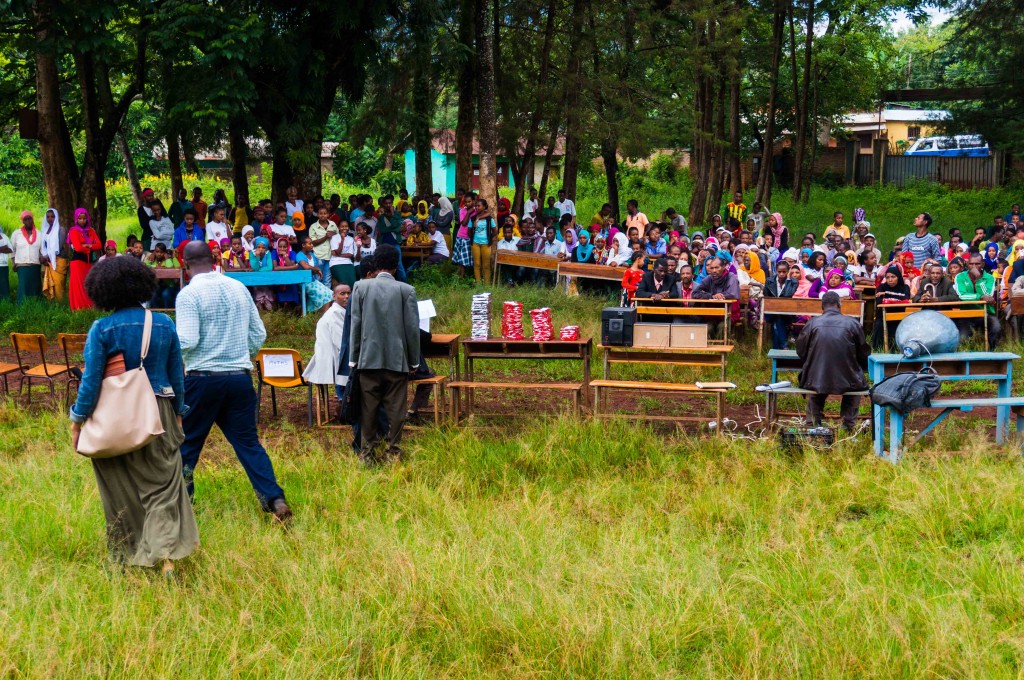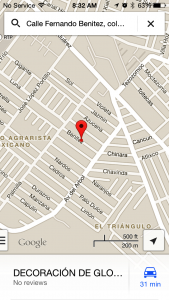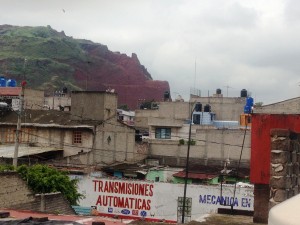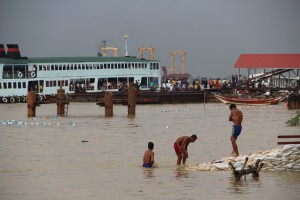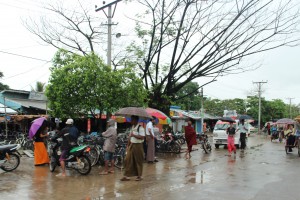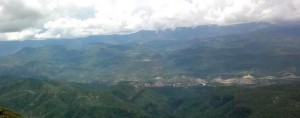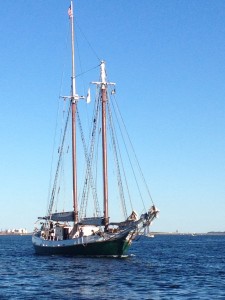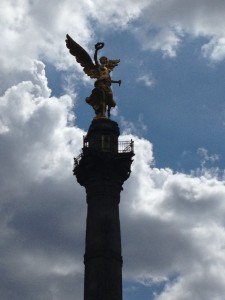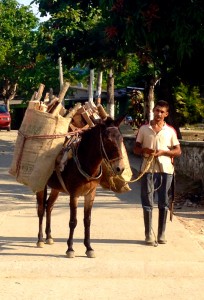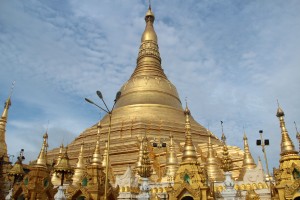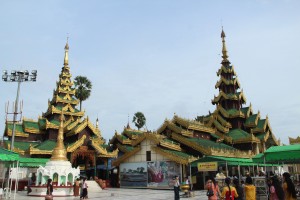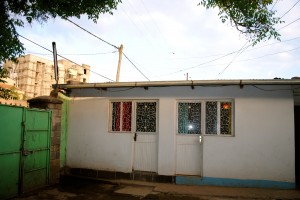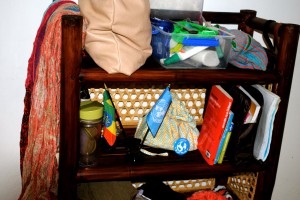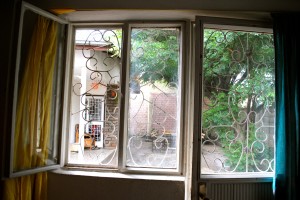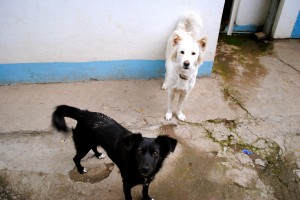Archive for July, 2014
Graduation Day
Posted by Phoenix McLaughlin in Ethiopia, Phoenix McLaughlin on July 10, 2014
Sunday we attended a 9th and 10th grade graduation. As is evident in my last post, we were under the impression that we would be attending a graduation for the man we were going to meet in Jimma. He did graduate that weekend, but it happened before we arrived. Instead, we were going to the graduation of the school he taught at, a high school in town.
Our presence was far more significant than I had expected. I thought that we would just be led to a seat in the back to observe the ceremony, and then be on our way to talk with our host somewhere else. Instead, we were immediately shuffled into the principal’s office upon arriving where we were formally introduced to the principal, two vice principals, and a local master’s student, and many pictures were taken. After being given a brief tour of the school, we walked over to the collection of classroom desks under a patch of trees where ceremony would be held. As you could probably guess at this point, we were not given a seat in the back, but were shown to some chairs at the front facing the audience. We sat with the teachers to our left (there were 16 for the 1,000+ kids in the school) as the administrators to our right began their various speeches.
All in all, the graduation was not too different from any other. Music from a drum line started off the ceremony, people made some speeches, some names were read, and people clapped. A few notable differences were the addition of a skit, people applaud in rhythm, and the administrators, having more sense than those in the U.S., don’t read off each person’s name, but instead present prizes to the top students and declare everyone graduated.
Of course, my experience at the graduation was different than others I’ve attended given my role as a notable guest. After the ceremony, we again spoke with one of the vice principals, who explained to us the significance of our visit. He told us that, above all else, our presence was a symbol of peace. I am paraphrasing liberally here, but he saw it as a chance for us to witness the peace in their community, as well as to express the peace and brotherhood between our country and theirs. We later learned that one of those pictures of us taken earlier would be printed out and hung on the wall to commemorate our visit.
A healthy dose of imposter syndrome came with this news—none of the other graduations I’ve been at ended with my picture being hung on a wall, so why should this one? While I do think the project we are here for is a good one, receiving such pomp and circumstance was more than a bit frightening.
But the more I thought about why I am here in Ethiopia, the less insane it seemed. I still feel unworthy of the extent of special treatment, but the sentiment is sound. I am here on a Peacebuilder Fellowship, which is built on the belief that peacemaking is not the exclusive realm of presidents and generals. In fact, it is best performed by regular people. Sometimes it can take a lot of work, but sometimes all it takes is showing up. On Sunday all it required was showing up at the school and telling them that we wanted to hear what they’re up to. It resulted in special meetings, special seats, and special pictures, all of which seemed over the top. But more importantly, it resulted in at least one man feeling that there was peace to be had.
The fundamental peacebuilding aspect of this fellowship had been pushed to the back of my mind by thinking too hard about the research side of the project. I have been thinking of myself exclusively as a researcher, but the fellowship is titled “Peacebuilder” for a reason. I may be performing research, but it is with the intention of constructing a good relationship between the people of two countries. The visit to the school became a quick reminder of this goal. I unexpectedly upgraded from researcher to peacebuilder within a few hours, and I won’t forget it. It was graduation day for me too, I suppose.
Getting Started
Posted by Phoenix McLaughlin in Ethiopia, Phoenix McLaughlin on July 10, 2014
This was written Saturday, July 5th, after arriving in Jimma.
I have now been in Ethiopia for over a month, and I think it is fair to officially declare this week as the beginning of real fieldwork. I am writing this from a hotel room in Jimma, having just arrived from a seven-hour bus ride (it was supposed to take four). We will be here for a few days meeting with an environmental activist before heading back to Addis. Then we’ll go to a town near Adama to see the water management techniques there. Then we’ll go to a village near Harar to see a well-building project. Then we’ll go to Mekele. Then Arba Minch. Then Bahir Dar. Then we’ll go home.
I’ve become a researcher all of a sudden, hopping from city to city, town to town to dig up stories. I spent a month as something else. We did a few interviews in that time, and spent plenty of time in meetings to set up future interviews, but my days seemed to be filled with activities primarily aimed at setting up a home base. It took weeks to find a house, weeks to figure out food, weeks to decide where to keep things on me (not in my pocket it turns out), and weeks to set up meetings. I have been less of a peacebuilder and more of a homebuilder. I’ve been an adapting species shedding vestigial limbs like eating utensils and a driver’s license.
Not everything is settled, but it is enough so that we can leave Addis. We needed to get everything set up so we could leave it behind. Now here we are in Jimma, preparing to meet an environmental activist in the morning to see his graduation before continuing on to the business at hand: everything water in Ethiopia.
Ethiopian club music is being blasted outside my hotel room door, the sink doesn’t drain, and I’m tired, but it’s good to be here. We’re here to dive into our work for the first time, and I can’t wait to start.
Iztapalapa, the district hit by water conflicts.
Posted by Ainhoa Martinez in Ainhoa Martinez, Mexico on July 7, 2014
Our second individual interview took place this weekend, in the Delegation of Iztapalapa where we got a glimpse of water issues affecting an entire district.
This district lies in the northwest region of the city. An area high in crime, low resources and known to be overpopulated. Taking these facts into account, we decided to get to the district on Sunday because it’s a sort of family day, in which you can see streets full of parents with their children and local markets.
Getting to Iztapalapa was an adventure: the metro line we thought we could take all the way down to our destination was blocked off halfway. From what we were told, glitches in the line had made the rest of the line unsafe to travel. We took stairs back up to the street where a free bus line stopped at every closed metro station. After that we took a small van crammed with locals deep into the heart of Iztapalapa.
We couldn’t avoid thinking of Phoenix’s blog post about travelling in small buses in Ethiopia. The situation was funny and a little bit concerning, as we weren’t sure how safe the vehicle was. Fortunately, having women and kids around made us feel safe (this feeling has come to us in more than one ocassion). Over bumps and zig-zagging our way through what seemed like a maze, the van got us quickly to our destination.
We felt grateful that our interviewee opened her home to us with open arms. We explained the project once again and asked if we could videotape her story, “anything to help bring attention to this,” she replied, nodding in agreement. She gave us the history of her family and it’s issues with water scarcity and contamination. With a bright eyed, joyful demeanor she began to weave a story that started decades ago, when there were no water problems at home.
We were amazed to find how a little bit of clean water can be used time and again for different household chores. It made us conscious of how much water we use daily without once thinking about how we might recycle it. Water used for showering, to flush the toilet. Water used for washing clothes to mop floors. In this case we learned that need leads people to be creative in finding solutions to survive.
We left the house with the feeling of a job well done, and the hope that our project brings a voice to these problems. If we can help this family by telling their story we will have done our job.
On our way back home, almost by chance, we found multiple “Pipas” (trucks used to distribute water to individual houses). We quickly took our cameras out and took photos for about 20 seconds, until we saw a guard approaching us and we quickly left.
Weeks before, a policeman started asking questions about “what we were doing” when on Insurgentes taking a photo of a road that was flooding. “It’s for the photo memory album, we are from a small village and have never seen so much traffic in the street,” we lied. Then the policeman started talking about the World Cup and we quickly slid away. So this time in Iztapalapa, we didn’t want to try our luck!
South Yangon
Posted by Namsai Wongsaeree in Burma, Namsai Wongsaeree on July 5, 2014
This past week I got a chance to visit two townships in South Yangon, Dala and Kawhmu. Dala is, from what I have been told by many individuals, the area in Yangon that suffers the worst water crisis. Drinking water is highly needed in those areas in the dry season.
The differences between downtown Yangon and the south, the other side of Yangon river, strike me when I first arrived there. While the city of Yangon is developing in an incredibly fast pace, permanent buildings are rare to be seen on the other side of the river. It seems almost like I was back in the dry zone again, with, of course, more green space and rain.
There are two ways to cross Yangon river; by ferries or by bridge. Taking ferries seems to be a more promising and faster way. It takes around 15 minutes to cross the river with only 1500 Kyat (around 1.5 USD) per car and 100 Kyat (around 10 cents) per person. Though, it took us quite a while to get there and come back since the transportation ferries only come every two hours.
It is a shame to see the amount of waste in Yangon river. Yet, children are still having fun swimming, and men are still showering and get cleaned (?). The water is clearly not suitable for drinking. The mixture of sea and fresh water here is only suitable for some domestic uses such as washing and bathing.
My first impression of Dala is that everything is lively and colorful. There are people with very colorful clothes and umbrellas walking and biking everywhere. There are some rain storage ponds full of lotus (to prevent water evaporation in the dry season), there are some areas with drainage problem, but so far there is never a flooding problem in this area.
Kawhmu, however, is quite different. It takes another hour on a bumpy and muddy road to get there. The road is very dangerous for locals, whose main vehicles are motorbikes. Fortunately, the road is being improved. There is an immediate plan, funded by JICA, to build the road after the rainy season starting in October. This will be a good livelihood improvement for the people living in these areas.
Insufficient drinking water in the dry season is the main problem in South Yangon. People would store as much rain water as possible in the rainy season, with containers, tanks, storage ponds, and they would use the water in the dry season. Tube well is not an option here because of underground water salinity problem. In certain years (which is mostly every year now), when the rain is late, people would suffer. Starting from April and May, right before the rainy season, is when water is running out. Many rely on donated water, many, working in Yangon city, have to carry water back home after work.
Donation is not enough and long-term solution is needed here in South Yangon.
Acknowledgement: I am grateful for the National Engineering and Planning Services (NEPS) for making this filed visit happened. This “private company but doing works like nearly non-profit style” focuses their works on water facilities planning services and have built storage ponds in South Yangon area. I am also grateful for JICA, all the donors, and the locals who took time sharing their stories with me.
Re-discovering the meaning of water in the land I thought I knew so well.
Posted by Jessica Sanchez in Jessica Sanchez, Mexico on July 4, 2014
I’m halfway through my journey as a Peacebuilder in Mexico, and every week I’ve come to re-discover the land I thought I knew. It’s one thing to be a native of Mexico, it’s another to be a foreigner in Mexico, and still another to see Mexico and the U.S. as “home,” even when I feel like a native of and a foreigner in, both.
Let me explain.
The phrase designated to identify me by census questionnaires, law school applications, insurance agents and many other U.S. institutions is “Mexican-American.” “Mexican-American,” has always seemed to me to be a superficial oversimplification of how a person born in the U.S. might identify themselves. It’s hard enough for a person to find an identity, but doing so under this classification only multiplies the obstacles. Needless to say, I grew up confused about my place in school and U.S. society in general, not to mention how school and society saw me. In my journey to find an identity, all that was clear was that I was never just considered “American,” hence I never just felt “American,” though I was born, raised and educated in the U.S.
Crossing the border didn’t make my understanding any clearer. My parents are from a small village, Villa Guerrero, in Jalisco, Mexico, a place I’ve visited for different lengths of time just about every year since I was a child. A place filled with family, friends and memories. I was raised on Mexican traditions and culture, I speak fluent Spanish (by that I mean that people in D.F. often don’t even realize I wasn’t born in Mexico), I’m very invested in the political, social and economic progress of the country, and do in fact also call Mexico “home”. Yet, natives identify me as a “gringa.”
Today I have much to learn about myself and my identity, and though I do not call myself “Mexican-American,” I live happy and passionately as a hybrid. My dual identity provides me the ability to understand, adapt and belong to two very different countries. It facilitates my ability see things natives and foreigners of each country may not understand. As a Peacebuilder, however, I have come to see things that had escaped me; that natives and foreigners might see and understand more easily because of their long or short standing relationship with the country.
What do I mean by this? Water.
It’s not until I became a Peacebuilder that I began to see the role that water played in the village I’d known all my life. Water had surrounded me in one way or another since I was kid and now I realize I’ve known about water in Mexico for a very long time. My father and his family own ranches in Jalisco. Often he’d take me along for a ride to see the cattle, the lands, the horses, instilling in me the importance of water in keeping them healthy. He’d show me the river that nourished his crops and divided his land from others; the niches dug out to drain water and guide it to where it was most needed; the wells that collected the water supplied to the land; the water holes that kept the cattle hydrated; and the lake that provided water to the village’s inhabitants. Every visit, water was a topic of conversation and there was never enough of it.
Until this point I’d never much paid attention to the issue of water in Villa. I’d never felt its scarcity. I’d always had it when I needed it. That tends to be the norm though, doesn’t it? An issue often doesn’t come alive for someone, until they’re affected by it in one way or another. In the case of water, most people don’t worry about until they don’t have it. Now I see it, care about it, and attempt to do my part to conserve it. I feel guilty for my lack of awareness all this time.
This week I asked my mother about water in Villa, something I’d never done before. She responded, “it’s rained a lot lately” and that because of it Villa was beautiful. Now I understand this simple response in a new light. Villa is beautiful because it’s not suffering from a lack of water: it’s inhabitants have enough to drink and use for daily chores, the animals it breeds and maintains to survive are healthy because they’re hydrated, and because the soil is nourished it’s crops may flourish. Now I realize that when the answer is, “there is little water, it hasn’t rained,” the reality will be far more complicated.
VARIATIONS ON A THEME
Today, America celebrates the adoption of its Declaration of Independence, marking 238 years of freedom from British rule.
On the 14th of July, Bastille Day, France will honor the battle which lead to the end of feudalism and the enactment of its Declaration of Rights of Man and of the Citizen.
As I walk around Mexico City, I am surrounded by monuments built in memory of this country’s myriad battles for independence, and to honor those who have continuously fought for it.
Like Phoenix’ burro in the marketplace, these testimonies to human struggle unceremoniously plowed into me today, forcing me to take a moment to reflect that almost every corner of our world seems to have been in a war for freedom from one form of tyranny or another. (One doesn’t need to tweet, twitter, chirp, or be linked-in to know that there are vicious battles for freedom being fought, even as we sip and dip, here in our blog cafe.)
Whether as instigator of these fights for freedom, or the tool used to quell them, the denial of access to resources required to meet even the most basic of human needs becomes a common battleground. Deprivation of basic needs is spotlighted, at times, but too often hidden behind layers of obfuscation, sometimes self-imposed. (I plead the Fifth!)
As I listen, learn and relate the tales surrounding water–the lifeblood of all living things–I wonder if there could be a day when the world’s citizens join arms around the pozo (well) to guard it from exploitation and usurpation by they who would be king(s).
Just try to imagine the size of THAT monument to independencia!
The altitude of Mexico City
Posted by Ainhoa Martinez in Ainhoa Martinez, Mexico on July 2, 2014
These last days I have been feeling a little bit sick because of the lack of oxigen in the air and the altitude at which is located Mexico City. After calling my insurance service and visiting the doctor, I am feeling much more better now that I have taken the proper medicines.
The problem is that I usually live in a city located at the sea level and Mexico City is about 2,300 meters (7,500 ft) above that level. The higher the city is located, the less pressure is in the atmosphere. Because of that, there is less oxigen in the air and each person reacts in a different way. For example Amy came from Colorado, which is located in a higher altitude from the sea level than Mexico City, so she is doing well.

Mexico City is located in the Valley of Mexico, in the central-southern area of the country. In addition, there are 2 volcanos close to the city.
But what is most characteristic of this area is the fact that inside the city you can go from zero level (sea level) to the highest:

In this map you can see the different “Delegaciones” of Mexico city and their altitude above the sea level. “Delegaciones” are the different districts among the city.
And I wouldn’t be telling you all these facts if it had nothing to do with water conflicts. The altitude of the whole city and the different altitudes where the “Delegaciones” are located do affect the water problems of the city. It is all about water pressure. If the “Delegación” is located in a medium level where water reaches without the need of machinery, you will probably have no problem with water supply. However, if it is located in a higher level machinery will have to push it to the top, which generates a huge cost and does not always work properly.
For example, Jessica, Amy and I are living in “Delegación Coyoacán”. Inside Coyoacán there are different levels and as a result of that, you can find great water conflicts or the best water supply at the same time in the same area. If you had read Jessica’s last post on the blog, you will note she’s been having some problems with water at home, whereas I have no water supply problems at home because there is a lot of pressure in the water that enables it to reach homes.
Last day we were visiting the craft market of Coyoacán and had the opportunity to talk to the people working there.  We met Mrs. Mónica Robles there, a woman who was selling incense, natural products and tiny zen gardens at her market stall and who, for our surprise, was majored in Antropology. She told us people living in “Colonia El Rosedal” (a neighborhood just next to us in Coyoacán) were having some water problems.
We met Mrs. Mónica Robles there, a woman who was selling incense, natural products and tiny zen gardens at her market stall and who, for our surprise, was majored in Antropology. She told us people living in “Colonia El Rosedal” (a neighborhood just next to us in Coyoacán) were having some water problems.
We will plan to gather stories in El Rosedal area for the next week. Meanwhile, the Doctor told me to stay in bed and take my medicines for the next 3 days and Jessica and Amy are also looking after me (thanks Constructoras de paz!). I will be totally recovered for the weekend, when Jessica and I are visiting a house where the family members are suffering from water supply and sanitation problems. I cannot wait to see what we find there!
Feeling blessed in Yangon
Posted by Namsai Wongsaeree in Burma, Namsai Wongsaeree on July 2, 2014
“We (I) will help you”
I have been told this sentence over and over again. Everywhere I found myself here in this beautiful city of Yangon, I got nothing but generous help. A kind of help that I would never have imagined of…
I have been working and receiving help from Burmese locals this past week. Sincere, caring, talented, trustworthy, and kind are the first adjectives that popped up in my mind when thinking of how to describe them. Surprisingly, this blog is, by far, taking me much longer than usual. I am not sure if I can do them justice in conveying how amazingly loving they all are.
Coming here not knowing anyone and having almost no proof of my identity, I had thought that building trust would be a difficult challenge. I can’t be more wrong. My premature assumption was clearly proved to be invalid.
A UNDP National Consultant trying to call and successfully connecting me with everyone he knows that works on water issues…
A retired pro-rector and an adviser on environment and education showing up in the guest house and taking me around to meet the people that he knows can help…
University professors agreeing to help with anything they can, from sharing their knowledge of the issue to directing me to the right people…
Senior engineers, consultants, and directors agreeing to take me along in the field, offering help with translation, and resisting my failed attempts to pay for my own breakfast, lunch, and snacks…and all agreeing that they now have a new “daughter”
A business owner coming to find me, offering her whole day (and potentially more days) taking me to meet with her friends who know of and experience water crisis, helping to find a translator for the VDO clips Janine and I had filmed in the dry zone…
A monk, a doctor, a reporter, and many individuals taking their time and patiently sharing me their stories and thoughts…
A local NGO calling and offering to come find me…
Meeting one person leads me to many more. Unexpected help is being offered.
Burma is an absolute definition of beauty. Beautiful country, beautiful culture’s’ (and I would like to stress my “s” here), and beautiful people.
I can’t be more thankful. I keep wondering what I have done to deserve all this.
“Are you Buddhist? In Buddhist, if you are good, the good thing will come to you”
Right. Now I will just have to live up to what has been given… Not easy.
Home
Posted by Katie Petitt in Ethiopia, Katie Petitt on July 1, 2014
Last Thursday I moved into my very own Addis home. I share it with 4 others: 2 are away on holiday, 2 dogs and a guard. It’s noting special, but it is nice to be able to unpack and cook for myself. I got a pretty good deal and will be paying less then $300 a month for the rent, a maid, dinner cooked for me every weeknight, and a security guard. I am happy with my find yet it still does not warrant $300 a month for two reasons: 1. While the water is fairly reliable (which is such a big deal!), the water pressure is hit or miss when it comes to the shower. Today was my first bucket shower in Ethiopia. 2. The more important issue is that my rent costs so much. As I said before I feel like I got a great deal but we should all keep in mind that the average person in Addis Ababa makes from $50-$100 a month. My rent is $300 and that is a great deal.
I am living in Bole, which is an expat haven, something that certainly affects the high price. Yet, the main culprit for the high living costs is inflation. Ethiopia has got it bad. A friend from Addis and I were talking the other night about inflation and he said that 6 years ago, you could buy 3 eggs for 1 Ethiopian Birr. Now, he said, you can buy 1 egg for 3 Ethiopian Birr. He told a story about how his cousin, who now lives in the US, used to love coming back to Addis. She thought it was heaven because with the money she made in the US she could buy so much here. Now she can get less for $100 then she use to. High inflation of course has greatly affected this country which was recently called the 2nd poorest country in the world by an Oxford University report. (Here OXFAM explains Oxford’s Index http://oxfamblogs.org/fp2p/measuring-what-matters-the-latest-multidimensional-poverty-index-is-launched-today/)
I would be wrong to blame all of the housing issues on the inflation, there are many reasons rental rates are so high, here are a few, yet they seem to all come back to inflation and good old supply and demand. Addis is the international hub for International NGOs working in Africa. The UN, African Union and countless embassies call Addis home. These organizations offer exuberant housing allowances for their employees. Most of these people are making dollars in a country where US currency goes along way (although not as far as it use to). All that, and needing to find a quick, easy, nice place makes people pay more in the ballpark of $2,000- $4,000 for a place that is definitely not worth that in Birr. Landlords know there is a constant stream of these employees who will pay these prices, so they keep their rents high, which then drives up the prices for the lower-range places like mine. A second reason is the boom in population Addis has experienced in recent years. Addis Ababa was founded as the capital in 1889-1891 and has only recently seen so many inhabitants. It just does not have the infrastructure to house so many people. Talking to people out and about you get a sense of how quickly the city is growing. I have asked many residents how many people live here and I have gotten anywhere from 2 million- 10 million people. A Google search will give you no current numbers, which may be why there is such confusion. Development is moving faster then the city is ready for and it is interesting to see.
A third reason for the highly inflated rents is because the government has been demolishing the slums. The administration is to provide government housing for displaced people, but in the mean time those who can afford other housing are desperate for shelter and will pay high prices while they wait. Rent prices keep increasing for many reasons. The rent prices are rising but the income of Addis residents in not necessarily doing the same. All of this is equals out to a tough housing situation here in Addis.
The last 2 ½ weeks have been very stressful without housing. As I walk along the roads of Addis I see all the men, women, boys, girls and elderly sleeping in the street or under a propped up tarp, I think about how much stress they must be under and how small my complaints are. I am no longer homeless in Addis Ababa, but many many many still are.
